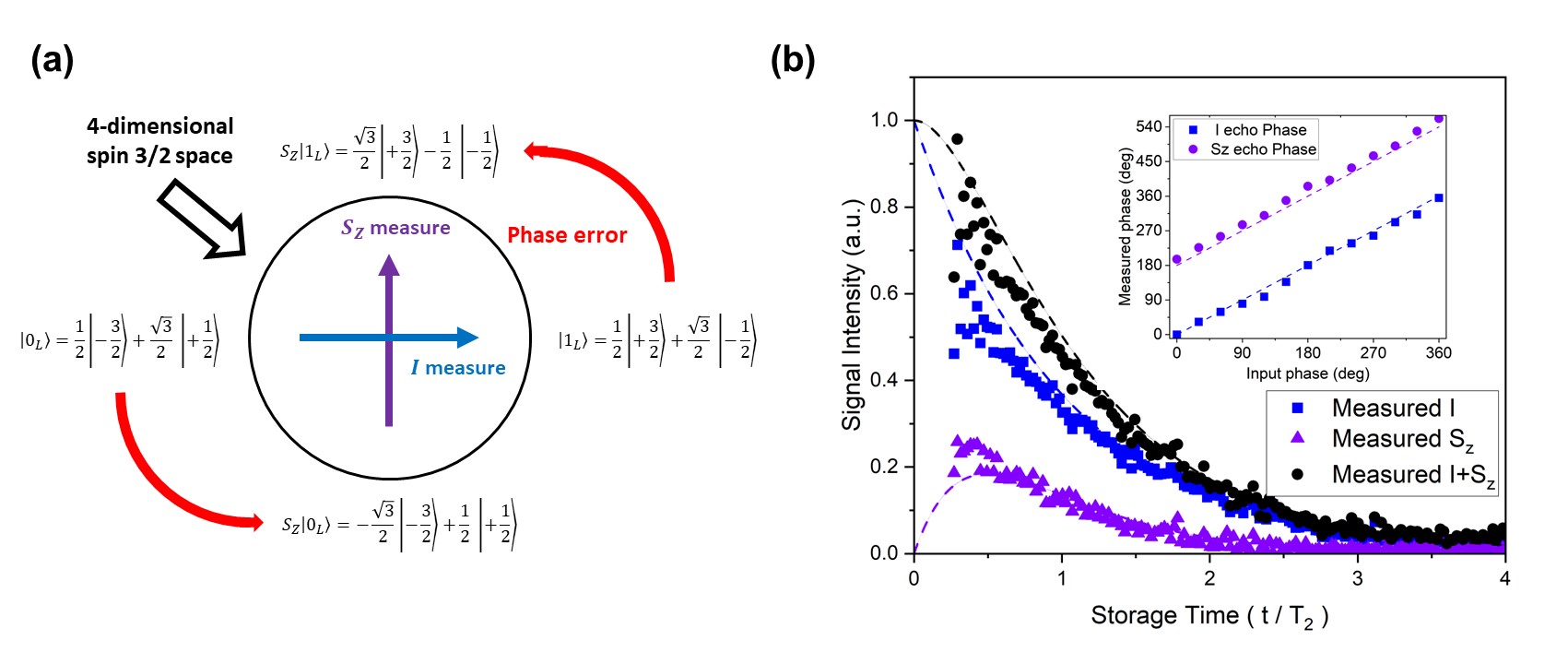Contributed talk
Coherent quantum state manipulation and error correction on spin qudit: SPRING23
Sumin Lim, Mikhail Vaganov, Gabriel Moise, Junjie Liu, and Arzhang Ardavan
CAESR, Department of Physics, University of Oxford, The Clarendon Laboratory, Parks Load, Oxford OX1 3PU, UK
The realization of a compact fault-tolerant quantum memory is one of the central challenges in the development of scalable quantum computer. To address this, spins in magnetic molecules have emerged as promising candidates. The size, number of spins and basic Hamiltonian parameters can be precisely tuned by chemical engineering, thereby serving as basic building blocks for the quantum information processors.
As an initial step toward this goal, we present the realization of spin-qudit based quantum error correction algorithm. In principle, it can be applied to a range of electron spin qubits hyperfine coupled to a nuclear spin qudit. Examples include 11B or 35Cl, each of which can be readily substituted into graphene or its fragments. In this work, we tested algorithm implementation in Mn:ZnO because this system offers a well-oriented ensemble of suitable hyperfine-coupled spins, providing an attractive testbed for our experiments.
The original quantum information was encoded into nuclear-logical spin qubit states |0L> and |1L>, as shown in Fig. 1(a). After a storage time and a decoding sequence, coherences corresponding to a no error case (I) and phase error case (Sz) were measured via spin echo of electron ancilla. The time and phase dependence of the measured echo, shown in Fig. 1(b), are well matched with the theoretical model and demonstrate that a single spin qudit space can be used to implement fault-tolerant quantum storage. Furthermore, we provide the comprehensive set of pulse sequences to coherently manipulate quantum states between electron and nuclear spins states. This approach can be extended to the spin 7/2 case to simultaneously correct first order X, Y, and Z Pauli errors on the spin system [1].
 Figure 1: (a) Schematic diagram of logical qubit encoding, designed to correct phase error. (b) Measured intensities of spin echo, correspond to no error (I) and phase-errored (Sz) cases. Dashed lines indicate theoretical model.
Figure 1: (a) Schematic diagram of logical qubit encoding, designed to correct phase error. (b) Measured intensities of spin echo, correspond to no error (I) and phase-errored (Sz) cases. Dashed lines indicate theoretical model.
[1] S. Lim et al., Fault-tolerant qubit encoding in spin 7/2 qudit, arXiv:2303.02484v1